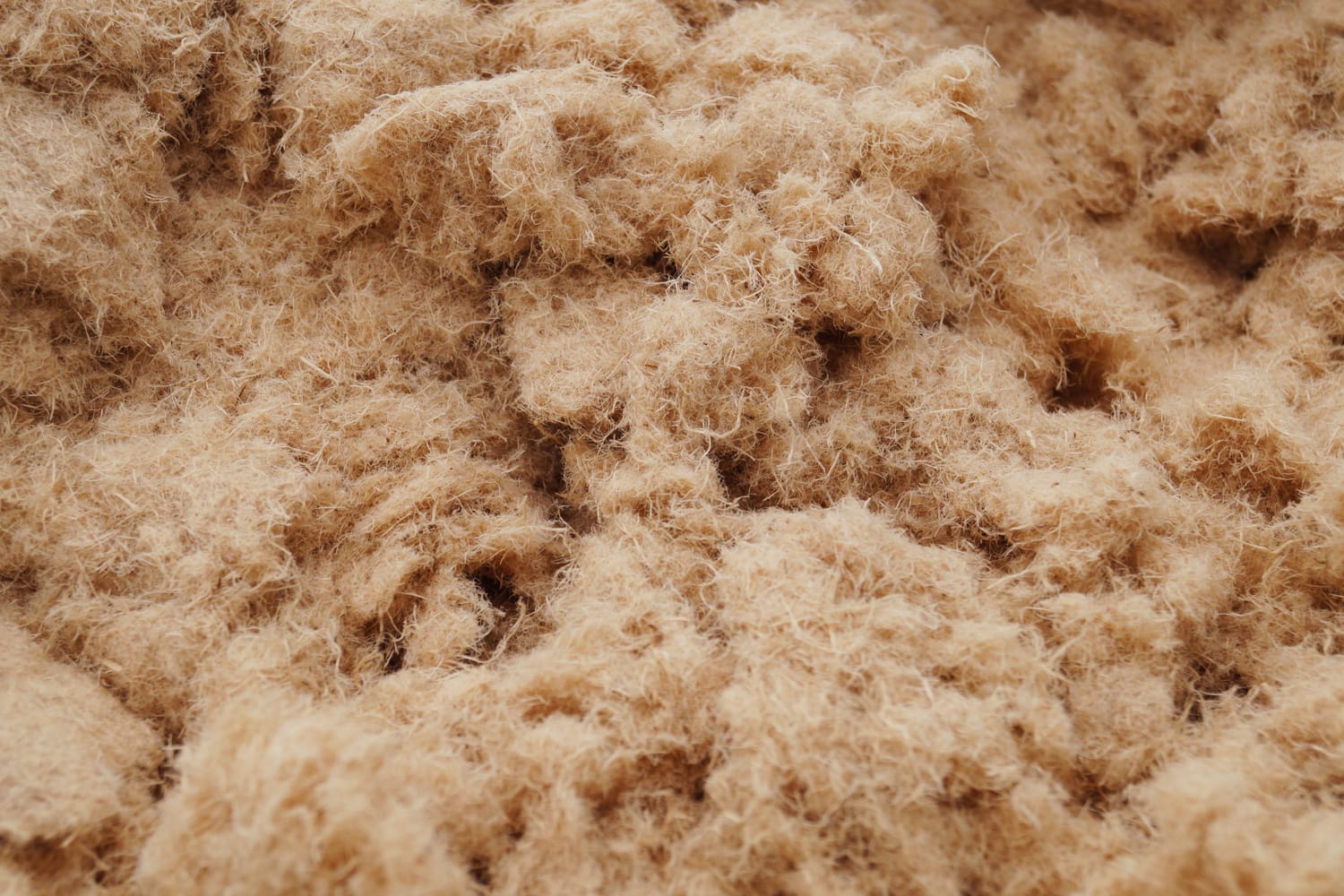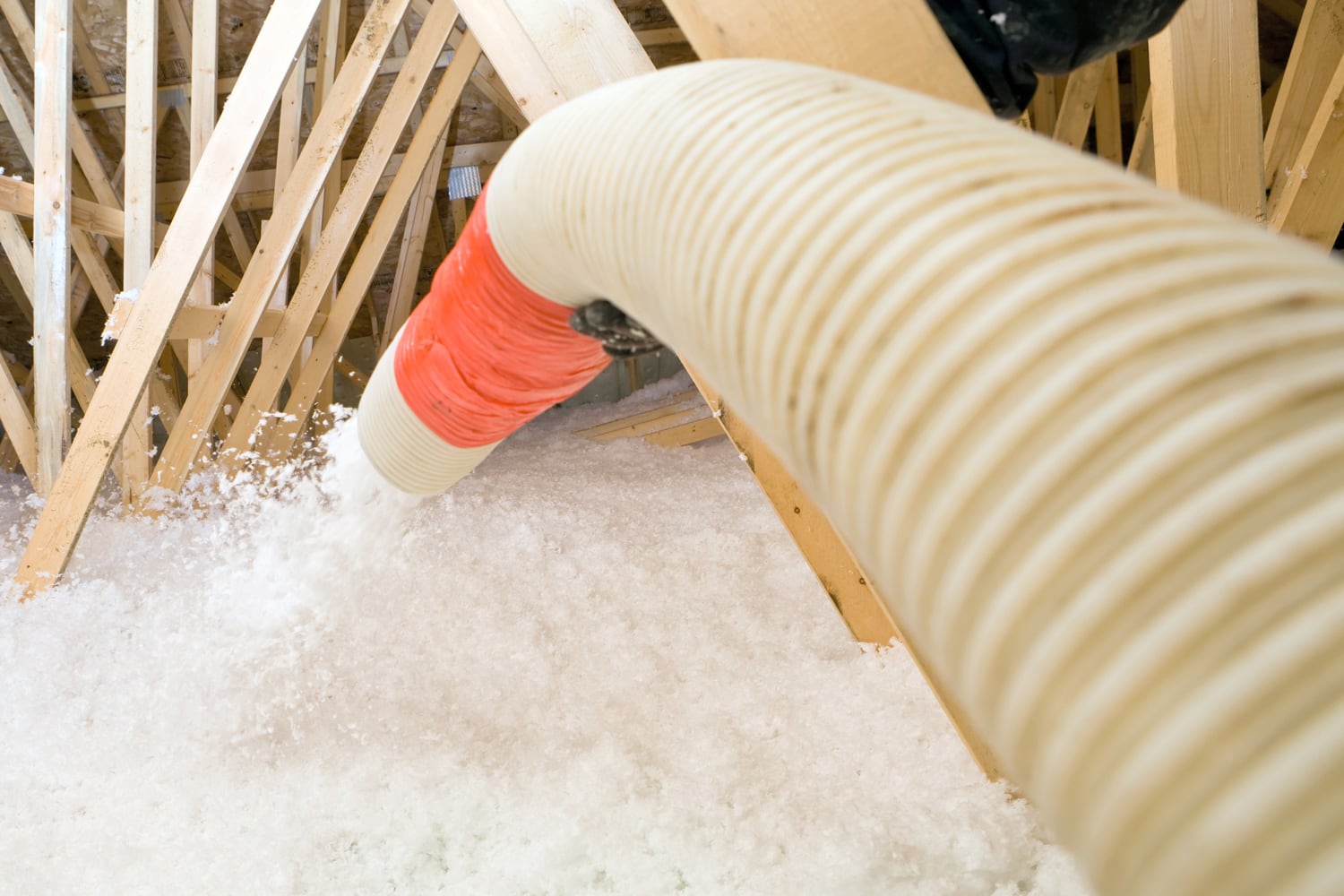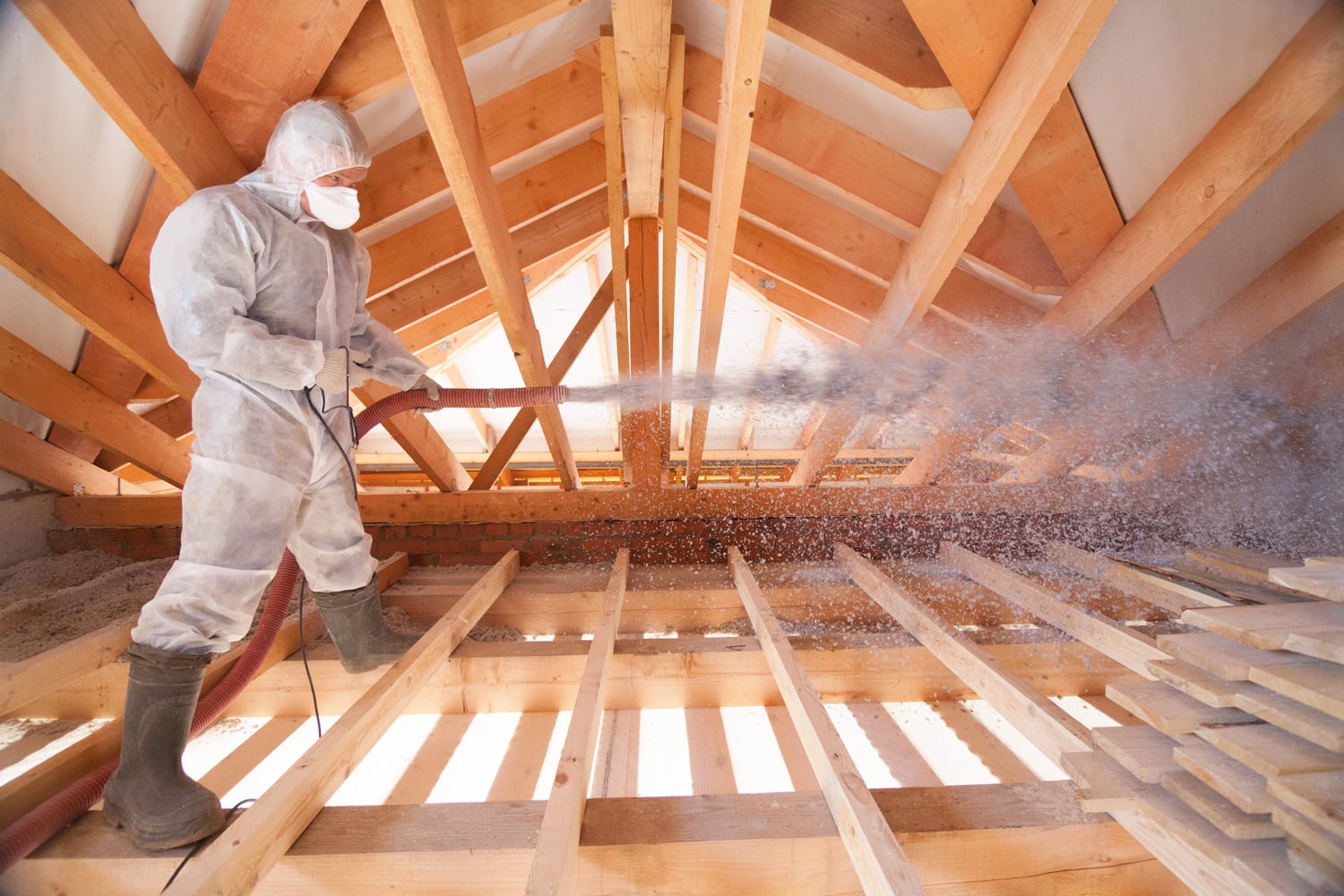The purpose of insulation is to prevent heat loss in an area. Insulation minimizes heat transfer to the uninsulated side. Insulation can also be useful in slowing the spread in a case of fire, but not all insulation is flame-retardant. Learn from this post if blown-in insulation is flammable.
Blown-in insulation is generally fire-retardant and non-combustible. Fire resistance depends on the composition, like fiberglass, mineral wool, or cellulose. Blown-in insulation has fire-stopping additives and undergoes chemical treatments to make them fire-retardant.
Even if blown-in insulation does not combust, you need to be aware of its limits and proper use to avoid fires. If you want to avoid fires, there are preventive measures you can do. Continue reading to understand how blown-in insulation deals with fire hazards.
![Worker Spraying Blown Fiberglass Insulation between Attic Trusses - Is Blown In Insulation Flammable [Can It Catch Fire]](https://hvacseer.com/wp-content/uploads/2022/10/Worker-Spraying-Blown-Fiberglass-Insulation-between-Attic-Trusses-Is-Blown-In-Insulation-Flammable-Can-It-Catch-Fire.png)
Is Blown-In Insulation Inflammable?
Blown-in insulation is generally inflammable. This type of insulation can be fiberglass, mineral wool, or cellulose. These do not have foil and kraft paper facings that are susceptible to catching fire. However, you must distinguish which of the materials has better fire-resisting capacity.
Fiberglass Or Mineral Wool
Fiberglass and mineral wool are great fire retardants. Both have high resistance against heat, are non-combustible, and will not fuel a fire. Manufacturers add fire-stopping materials, like polystyrene beads, to the composition of the insulation.
Fiberglass has zero fire hazards and is good to install in areas prone to wildfires. Mineral wool has a higher R-value than fiberglass, but it is expensive. In terms of temperature, fiberglass will melt above 1,000°F, while mineral wool at 2,200°F.
Although highly fire-resistant, fiberglass increases oxygen in the space when it melts. The insulation can quickly spread fire, and it will take around 20 minutes for the ceiling to collapse.
Cellulose
Meanwhile, cellulose is a "green insulation" that has 80% of recycled newsprint or another type of paper. The Consumer Product Safety Commission deems cellulose a fire hazard. There is an increase in fire incidents involving cellulose insulation, but it is not the root cause. It has fewer air pockets than fiberglass but can easily catch fire because of the organic components.
There are chemically treated cellulose blown-in insulation with compounds that resist fire. The fire-retardant chemicals are the following:
- Ammonium sulfate
- Boric acid
- Sodium borate
If you choose cellulose, check if these fire-retardant compounds are present and have passed the fire safety standards. Cellulose has a class 1 fire rating, which means the flames will not spread quickly.
Which Blown-In Material To Choose?
Among the three materials, choose fiberglass or mineral wool because they are non-combustible. Fiberglass blown in is better than mineral wool because it can fill in tight voids. Mineral wool is okay if you want to dampen the noise. If you choose cellulose, ensure the correct installation. It is best to hire a professional insulation installer instead of doing the project yourself.
How Safe Is Blown-In Insulation?
Blown-in insulation is generally safe. As long as you use protective equipment during the installation, there is nothing wrong. You can select this type of insulation to meet the needs of your home. The key to safety is the proper installation of the insulation regardless of the material.
Once installed, you should also keep the insulation safe. Damaged blown-in insulation can be a cancer risk. You might inhale or have skin contact with the small fibers, slivers, or volatile organic compounds (VOCs). These particles are all dangerous to health. The risks are present if you use fiberglass and mineral wool. If you want an eco-friendly option, you can choose cellulose.

What Causes Blown In Insulation To Burn?
Homeowners will add a layer of blown-in over existing insulation in preparation for the colder seasons. By doing so, insulation has more capacity to reduce heat loss. However, a home is more prone to fires due to the insulation's age, installation technique, and other factors in the area. Read about the factors below.
Age Of The Insulation
After several years, the compactness of blown-in insulation, specifically cellulose, increases as much as 50%. If the old insulation is 6 inches, after a decade it will only be 3 inches. In that case, the R-value of the insulation decreases per inch. The insulation needs more inches to get the required R-value. As a result, the thermal resistance of the blown-in insulation is weak.
Weak resistance to heat can make the insulation vulnerable to fires.
Improper Installation

Improper installation is a fire threat. Installation is critical because errors will lead to fire hazards, loss of property, and lives.
One tip is to fill with insulation within the 2.5 inches of air space around a chimney in the attic. Another thing to do is to prevent the sagging of the blown-in so that the insulation will not shift and allow proper airflow. Also, keep the small crevices and gaps closed so smoke from any fire will not infiltrate the insulation.
Decide whether you want to install the insulation yourself or let an expert do the job. Doing it on your own might compromise the safety of your house. Leave it to the professionals if you want to preserve your home. It will also help if you refer to local building codes when installing at home.
Other Factors
Electrical overloading can increase the risk of fire in the presence of flammable insulation. You need to check the capacities of the fuse and electrical wiring in each room to avoid problems. If only one fuse serves 2 or 3 rooms, it will overload.
Another risk is recessed can lights in the ceiling. The lights can get hot and melt the blown-in insulation. If you install these lights, build a box surrounding them. Use scrap plywood, wallboard, or thin metal sheets to create the enclosures. Leave at least 3 inches between the box and the light. It is best to find IC-rated lights to use safely with insulation.
Moreover, box out other electrical wirings on the attic or anywhere you have insulation. In that way, finding the wires in the future will be easy.
What To Do When Blown In Insulation Is On Fire?
If you have taken these preventive measures, but the insulation still caught fire, do not panic. Get out of the area where there is a fire and call your local fire station to be safe.
Blown-in insulation is common in attics. If there is a fire, firefighters may need to take down the ceiling. They will also open up the walls in the area to check for concealed fires. They have special equipment to suppress the fire. Firefighters will remove the components that create a fire in the area. These can be electrical wiring, heating devices, and other flammable sources
Do not return to the fire scene unless the fire officials declared it safe.
For smaller fires, if possible, remove the affected part of the insulation from the inside. Remove around 3-5 feet beyond the perimeter if applicable. Use buckets or salvage covers to transfer the insulation outside.
Is Blown-In Insulation Toxic When It Burns?

Fiberglass will emit toxic gases when on fire. The material is not eco-friendly and can irritate the skin and respiratory systems.
In comparison, cellulose will not give off harmful chemicals and gases in the area due to its organic composition. You can smell paper burning if cellulose is smoldering. Likewise, mineral wool also does not release toxic gases when it is burning.
Can You Fireproof Blown-In Insulation?
The blown-in insulation materials described in this post can resist fires but are not totally fireproof.
If you have fiberglass blown-in insulation, you don't need to fireproof it. Fiberglass comprises spun glass fibers and plastic polymers which do not catch fire. The same applies to mineral wool. Mineral wool is also naturally non-combustible because it has recycled iron and steel materials.
Yet for cellulose, additional processes help the material be more fire-resistant. Chemically treating cellulose will help. Aside from the chemicals added to the material, you should understand how the insulation works.
In Summary

Blown-in insulation materials, such as fiberglass, mineral wool, and cellulose are not flammable. These materials have fire resistance because of their composition. Among the three, fiberglass is the most fire-resistant, while cellulose is the least. Fiberglass and mineral wool don't need fireproofing. Yet, cellulose needs to undergo chemical treatments to make it fire-retardant.
The age, installation, and the objects surrounding the insulation can cause the fire. Be careful about how you use the room with the insulation so the materials will not catch fire. Call firefighters to suppress the fire because the situation can be dangerous.
Read about blown-in insulation from these posts:
